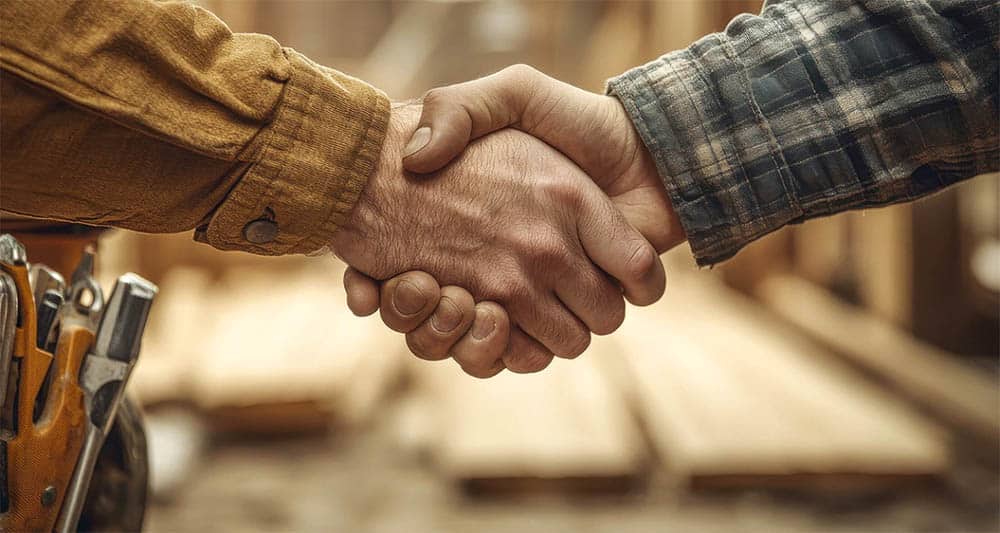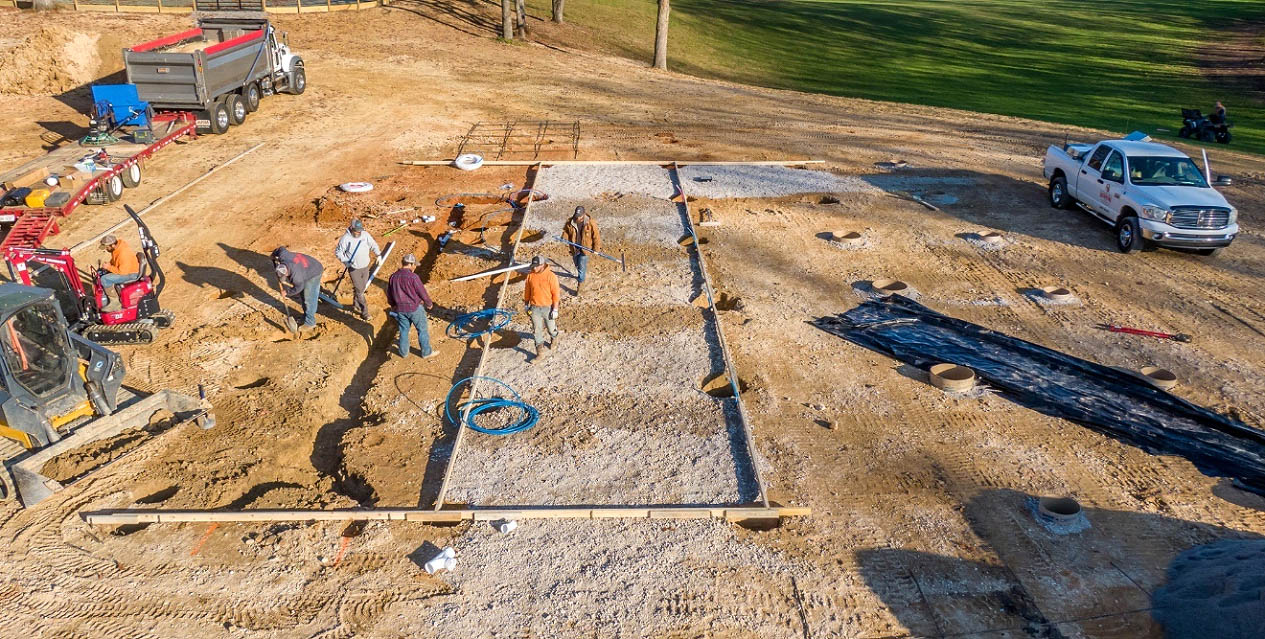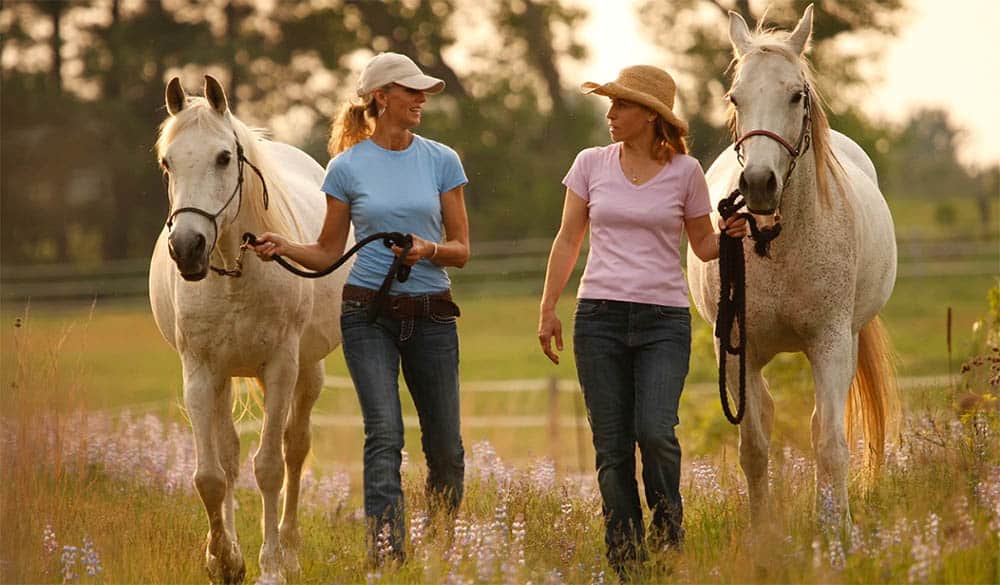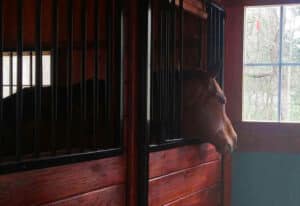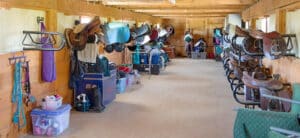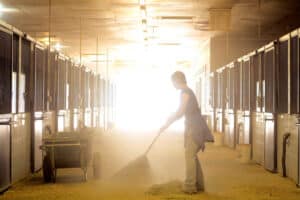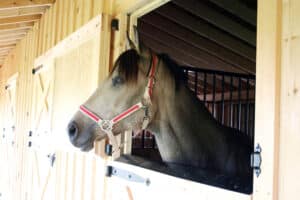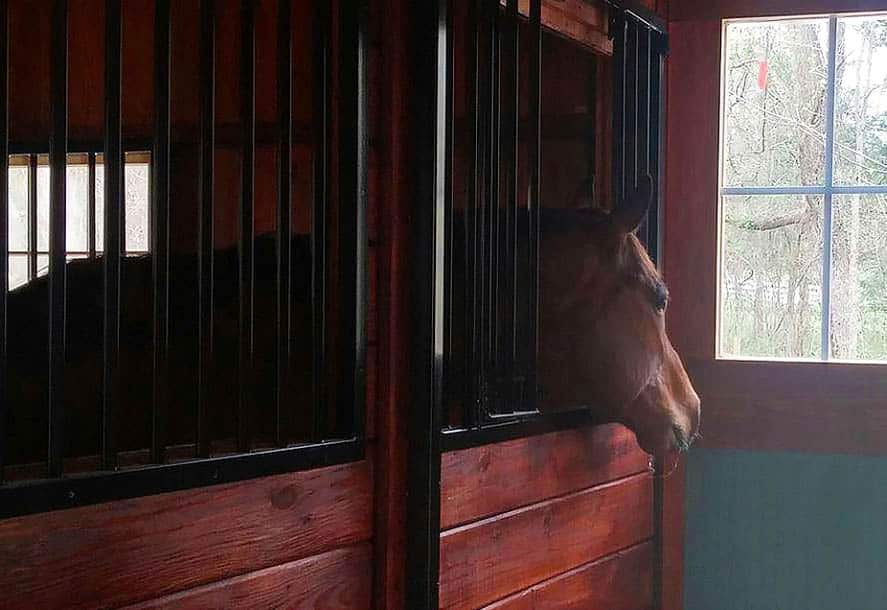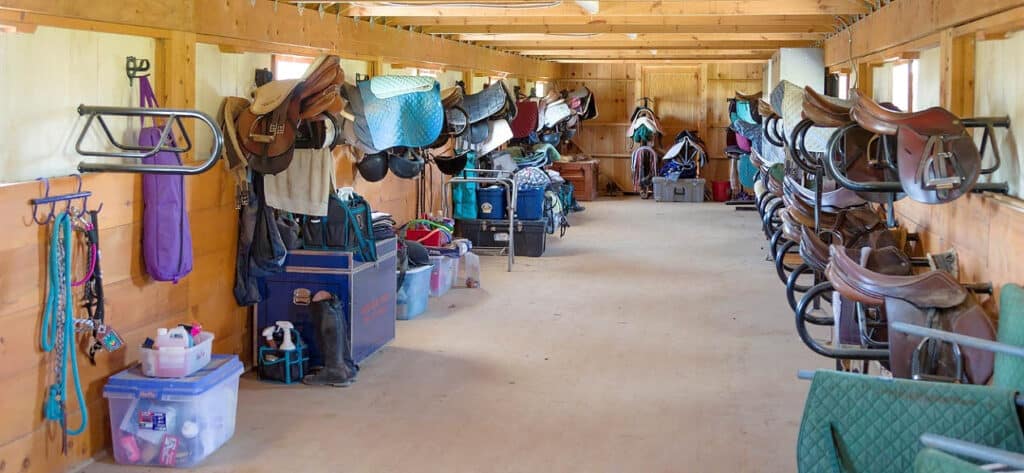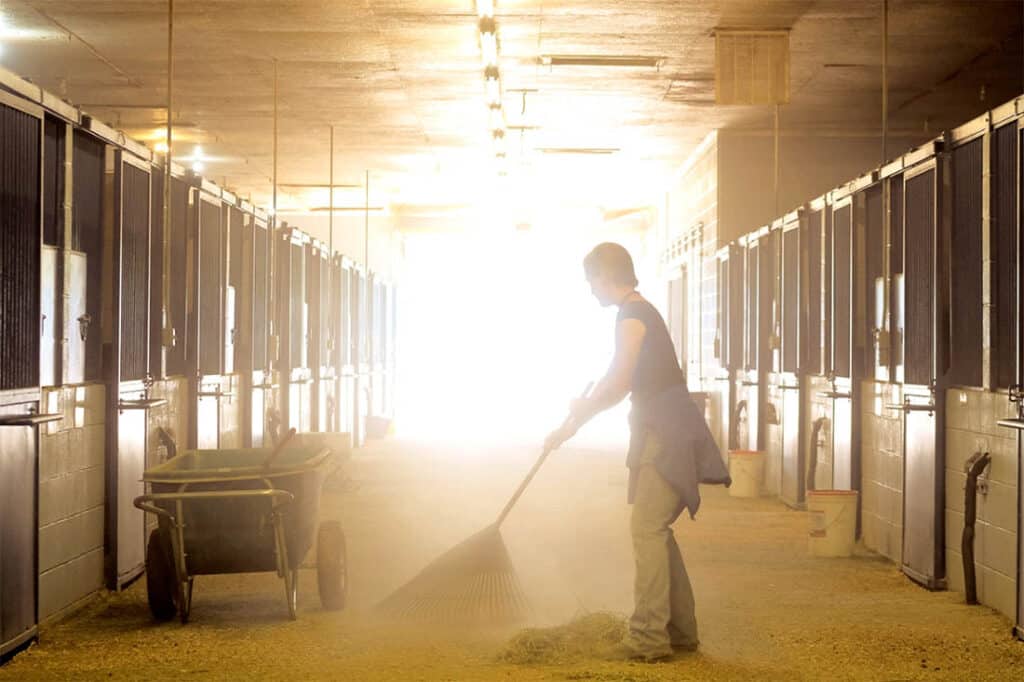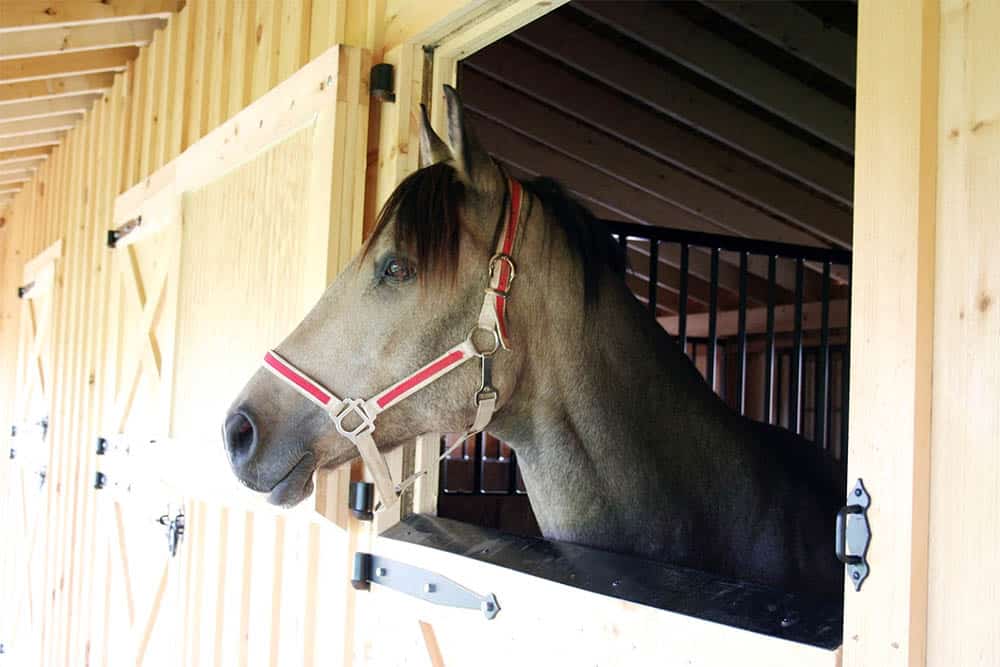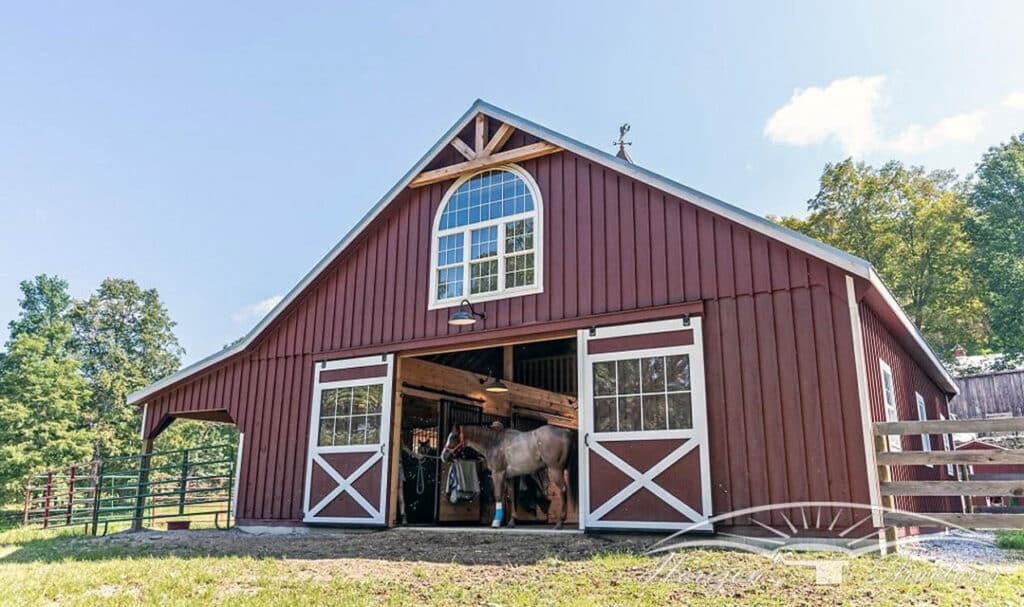We all make mistakes. Some of us make more of them than others. But when it comes to buying a new horse barn it’s best to avoid as many as possible. A project as big as purchasing a new horse barn is not one to be undertaken casually. At least not if you want the best bang for your buck, a pleasurable purchasing experience and satisfying end result.
Whether your horse housing is a high-profile center-aisle horse barn or is a smaller affair, such as a 10’ x 20’ run-in shed, common errors that could simply be avoided during the buying process are often overlooked.
Here’s a bit of tongue-in-cheek advice on how to bridle your best self to canter serenely through the acquisition of a horse barn.
‘Wood’ You?
If you were buying a new washing machine or a new horse trailer, you’d likely do some research in the marketplace and learn a bit about the new features, standard options and how such items may perform. For the horse trailer purchase information would be gathered about size and structural integrity, design floors and flaws, materials used in its composition and its ease of use for loading horses and carefree maintenance options.
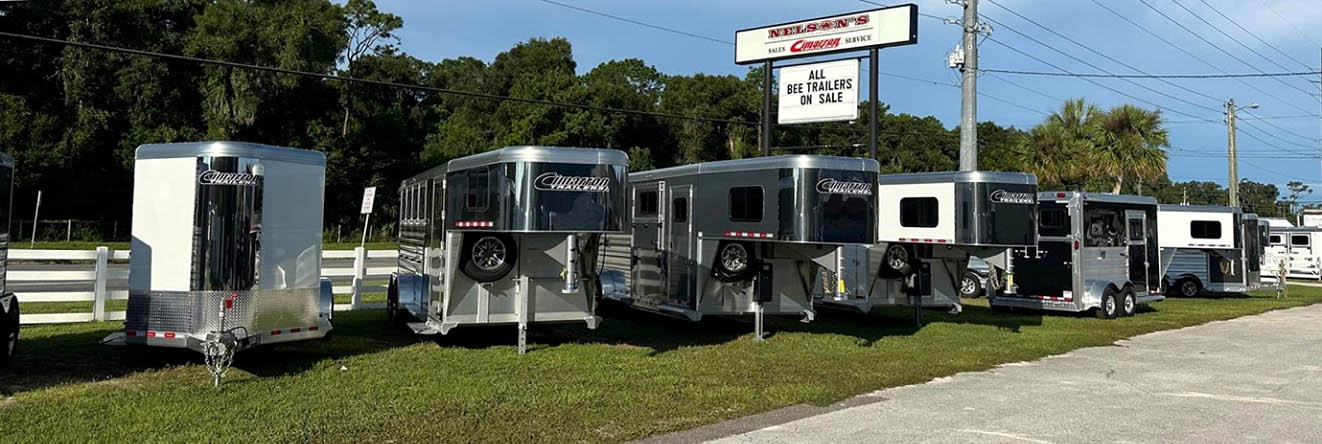
Would you buy an item as expensive as a horse trailer without knowledge of what material the floor was made of or whether the trailer was built of aluminum or fiberglass, what ramp system it had, what height and size the windows would be and how they would be grilled to protect the traveling equine? Would the components you couldn’t easily see such as the axles beneath it matter in their quantity or in their ability to take the weight of your two 17h.h. warmblood horses? Would the type and size of tires matter?
Yet, horse folks purchase horse barns without knowing what type of wood the barns are built with, the maintenance needs of the siding or roofing, or the size of features such as sliding windows, quality of the hardware or the construction of the entry doors.
“Wood” you be one of those people that doesn’t learn a little about wood types and grades? Would a quick look at a few photos that the construction company owner shows you on his cell phone be O.K. to convince you they know what they are doing?
That’s What They Said
Trust and transparency are marketing terms that are bandied about with abandon but what does that really mean?
If you were introduced to a person that was the ubiquitous, “friend of a friend of a friend,” and it came up in conversation that this individual worked in the construction industry, would you consider their offer to build you a horse barn in their spare time, seemingly on the cheap? Because, after all, they work in the house building industry and how hard can it be to build a horse barn versus a house? Hmm. Tempting perhaps. Saving all that money, dealing with someone you kind of know. Well not really know, but it seems safer than working with someone you’ve never met doesn’t it? And they seem so nice.
You give them your address and promptly this construction experienced individual arrives for their initial visit to inspect the site and give you a welcome confirmation that, “Yep. No problem. Easy to do.” They’ll gather a few workmates and start Saturday. A scribbled design with floor plan is hashed up between you and you write a check to the individual for the funds needed to get the work started with materials to be delivered at some point during the week. What could possibly go wrong?
Let’s look at the price to get this horse barn built. Did you go with the ‘time and materials’ price? Was an open-ended budget what you had in mind? Does it matter to you how long the building process will take or how hard the crew work or how much talent they have at carpentry and construction? Did you ‘nail down’ a price?
Ah OK. Good. You have a firm price. Job is completed and here’s your final bill (let’s hope you didn’t pay it all upfront). It seems to be higher than anticipated.
“I misspoke,” comes the reply to your question asking why the increase in price.
“Market pricing went up for the materials,” or “I had to pay extra for multiple deliveries,” or the old chestnut, “I’m not making much out of this. I had to pay extra for….. ”(fill in the dots).
When you execute a contract that specifies the materials to be used, the features to be included, the plans for the design, the timeline for construction or delivery and the final price and terms of the purchase, you are giving yourself a blanket of protection.
Home Alone
Simply leaving people alone to hopefully, get on with it,’ is a common practice. No-one wants to be that hovering helicopter supervisor second guessing things people do that supposedly know their job and want to get a job well done.
Is it wise to leave a construction crew to their own devices on your property without supervision? What if someone gets hurt or your horses are unintentionally sent into a panic by blowing plastic or other debris and run through a fence?
Take the time out to supervise the building project. Keeping a ‘weather eye’ on things and asking questions if you see something you are not happy about is the best way to keep the construction quality on time and on point.
Of course, the ideal solution to this issue is to buy a modular barn. The product is a known entity, the delivery timeline is easy to map out and its almost ‘instant’ ready for use appearance is a boon to the busy horse owner who wants to take stress out of their lives, not add it.
Saving Money on Site Prep
Everyone loves to save money. Unnecessary spending can soon add up and put you in a real financial hole but so can cutting costs in all the wrong spaces. The most common area in the building process that doesn’t get the necessary attention during both planning and execution of the project is the site preparation.
The preparation of what’s beneath the ground and thus unseeable can be quickly hidden from view or simply overlooked as unneeded.
Items such as drainage around your building’s footprint, digging in the correct depth for Sonotubes or concrete pillars to support the weight of the structure or extra costs for the extra inches of aggregates or their compaction are all fundamental needs to keep your building from water damage and frost heave. But either by design (because either you or the site prep company want to save time and money), or by lack of expertise and understanding, the site prep is often mishandled.
It is prudent to ask the company that is drafting the plans and constructing the horse barn for its specific needs in regard to site preparation. It is always better to prepare a larger site than the actual footprint of the structure requires as this helps avoid high traffic areas from mudding up and incorporate an apron area to help with roof run-off and drainage. It is essential to the integrity and durability of the structure of the building to follow directions for appropriate drainage and ensure pillars are placed accurately and to a proper standard.
Best Friends Mean Well
Your best friend likely has your best interest at heart when they offer up building advice. However, it’s unlikely that their experience runs to actually building a horse barn. If they had had one built, it also doesn’t mean they covered all the bases. They may even be blissfully unaware of shortcomings in their barn building enterprise.
Perhaps they didn’t get a written ‘to the penny’ price or have a clearly written contract. Perhaps they won’t wish to include the little mistakes they made along the way that might make them look foolish, like not staying on brand with quality siding components or roofing materials to save money. Perhaps they are more trusting of folks than they should be or have a deeper pocket of money from which to draw. And sadly, some friends may display uncharacteristic bouts of jealousy that cause them to overlook sharing all the pertinent facts.
When you buy a barn make sure it is right for you. That the design is what you need and want, that the paperwork is properly executed and that you have some idea about what you are doing.
You don’t want to be saddled with a poor end result in the quality of the horse barn once it is built and have to deal with the vagaries of intermittent stall flooding, rusting grills, poor air circulation or heavy barn doors.


